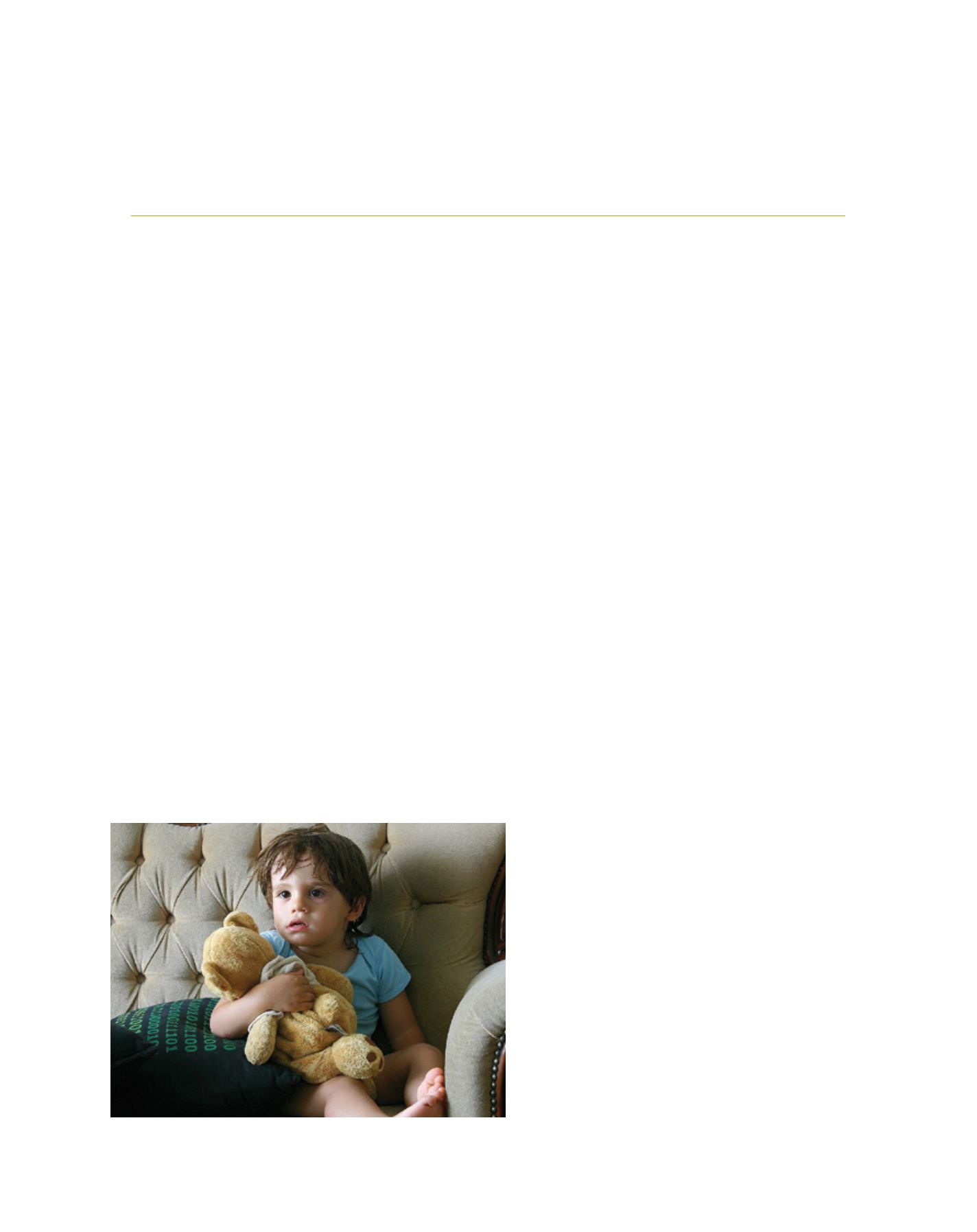

[
] 172
Transforming childhood: from reinforcing
consumerism to inspiring sustainable living
Erik Assadourian, Senior Fellow, Worldwatch Institute and Executive Director, The Fangorn Group
S
chool is an important influence in children’s lives. Most chil-
dren around the world spend more than 180 days per year in
school – typically five to six hours a day – learning basic liter-
acy, cultural norms and societal mores.
1
Some children, for example
in Japan, spend more than 240 days in school each year.
2
Formal
education is still a central force in shaping children’s values, thoughts
and ambitions. But in many countries, the media are just as, if not
more, influential in shaping childhood. In the United States, children
now spend an average of 7.5 hours a day, 365 days a year, engaging
with various media.
3
And since US children today are multi-taskers,
they’re actually cramming nearly 11 hours of media exposure into
those 7.5 hours.
4
Each year, marketers spend more than USD17
billion marketing to children worldwide – much of this directed
through the media.
5
The media and marketers have become primary
caregivers for a large percentage of the world’s children today, with
parents and teachers playing supporting roles at best.
Unfortunately, the values, information and ambitions cultivated by
the media and marketers are often at cross purposes with the educa-
tional messages shared in schools – especially regarding sustainable
living. For example, while school lessons may regularly discuss the
importance of healthy eating, these lessons are drowned out by the
presence of vending machines, sweet-sponsored curricular materials
in classrooms, unhealthy school menus and the countless advertise-
ments that fast food and sweet companies target at children.
6
Of course, it is not surprising that marketers have so aggressively
targeted children, as children have significant discretionary income
and can play an important role in influencing parents’
spending choices.
7
Businesses recognize this and market
to them. Some, like The Walt Disney Company, even hire
anthropologists to better understand children’s interests,
hobbies and purchasing preferences, so that their market-
ing campaigns can be more effective.
8
The unfortunate
side effect is that childhood is filled with hundreds of
advertisements a day, all of which reinforce a perception
of reality that happiness comes through the products and
services one buys, owns and uses.
9
To create sustainable cultures, we need to transform
education – and childhood more broadly – so that
children no longer grow up learning to be consumers
but instead learn to become guardians of the environ-
ment and active healers of the Earth’s systems. The only
question is how to achieve this. In short, there are three
aspects of childhood that will need to be addressed.
Firstly, we will need to address children’s access to the
media and what children are exposed to through the
media. Secondly, leisure time activities will need to be
designed to reinforce principles of sustainability and
respect for nature. And thirdly, formal education will
need to integrate principles of sustainability directly
into all aspects of the educational experience. If these
three elements of childhood can be systematically refor-
mulated, perhaps today’s children will no longer grow
up mimicking film celebrities and rock stars, but instead
will strive to be like our boldest environmental and
political leaders. And perhaps children will no longer
covet the newest ‘iGadget’ and fashion accessory, but
instead work to obtain the next Earth Scout badge and
environmental education award. This shift is possible,
but it will not come without a concerted effort to rede-
sign three key elements of childhood: formal education,
leisure activities and media influences.
Addressing media exposure
Such a significant amount of time is spent by children
with the media, much of the content reinforcing consum-
erist values and pitching consumer goods, that the first
and foremost task will be to rein in marketers’ influence
over the media and children’s total media access.
One of the key tools for this is of course to better
monitor marketing to children. Several Scandinavian
countries have done so recently and, in the past few years,
Spain has become a leader in curbing marketing exposure
to its population, first by banning advertisements on its
Watching TV. The media are influential in shaping children’s values and preferences
Image: Leonid Mamchenkov
















